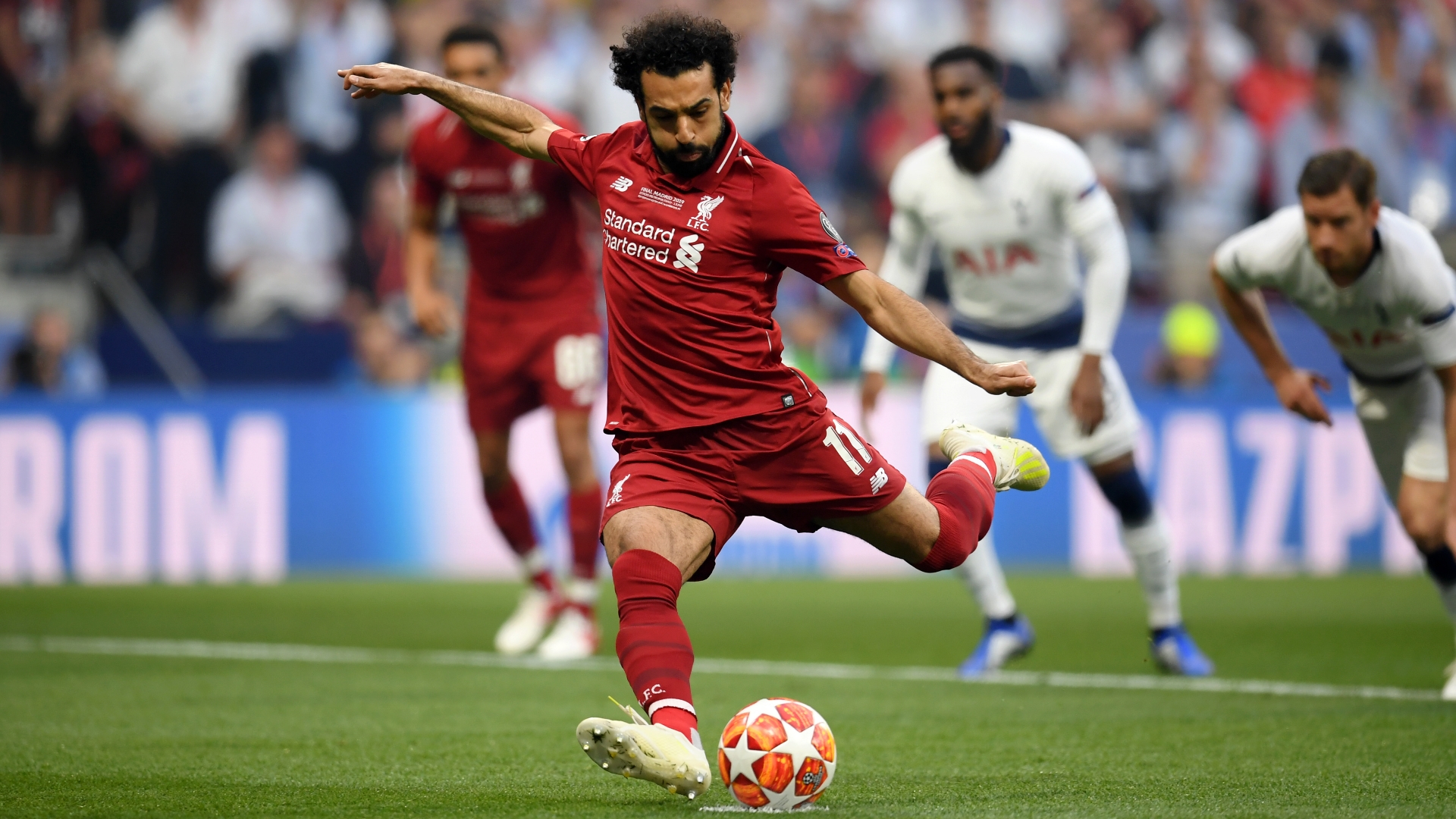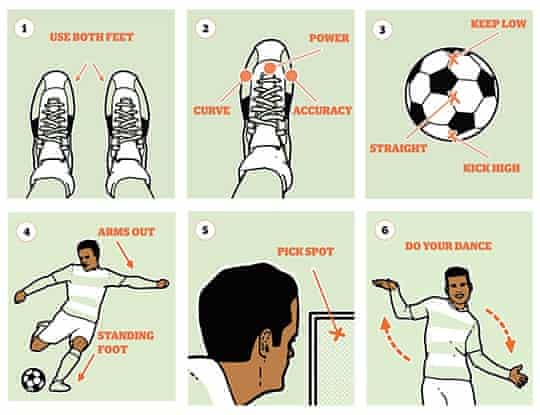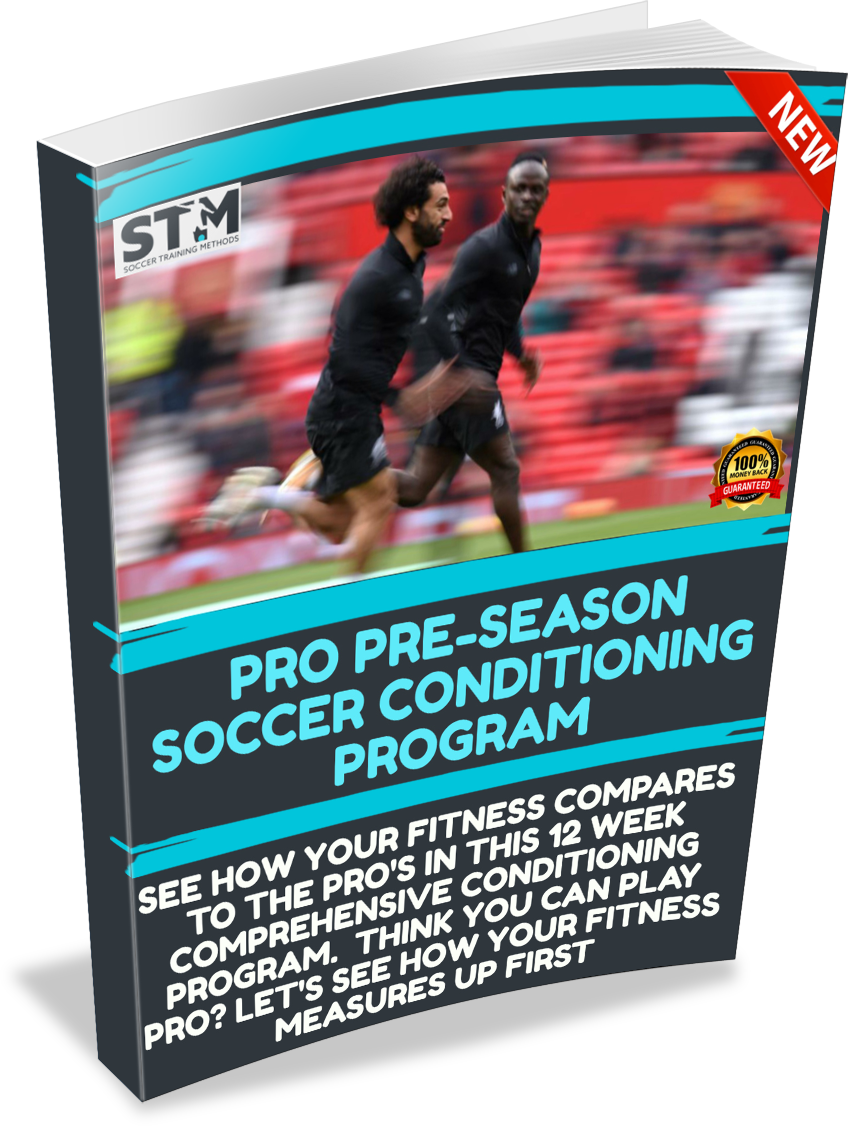Goooooooooooooooal!!!
Kicking A Soccer Ball Never Looked So Easy!

You tried kicking a soccer ball and now your big toe is mysteriously hurting and your toe nail is turning black?
Don't worry and welcome to the club of black toe nails all great players go through.
Now it's time to take a deep breath, put some ice on that toe and learn the fundamental techniques of kicking a ball.
Well in case you didn’t notice the basis that soccer sits on is kicking, kicking and more kicking. Becoming more comfortable with kicking with different parts of your foot and both feet will open up several more odors on the pitch in situations that use to be uncomfortable to you.
If it's just a simple shot you're looking to improve or learn it's your lucky day. If you want to learn how to hit the ball further, more accurately and maybe put some curve or knuckle on that shot then you've come to the right place my friend.
You may not be Salah, Messi or Ronaldo right now but with some good repetition and attention to detail of the right technique and fundamentals you will be there in no time.
Kicking A Soccer Ball Explanation Video
Learning To Kick A Ball With Power Video
5 Things To Remember
When Kicking A Soccer Ball For Power
1. Use Your Laces
- The top of your foot (where your laces are) is where you want to aim to get the most power behind your shot.
2. Land On Your Shooting Foot
- If you are striking the ball with the right momentum and technique you will be landing on the same foot you are shooting with first.
- Think of it as sweeping your foot under the ball with so much power and swing that your body is up in the air and can only land on that same shooting foot.
3. Keep Your Foot Flexed Down
- Keep that foot flexed downwards facing the ground just as you are striking the ball to get a solid contact with the ball.
4. Follow Through
- People tend to stop their leg swing as they make contact with the ball and just watch the ball.
- The shot is not over until the follow through is over, think about kicking through the ball not just at it.
5. Plant Foot Placement
- For balance, accuracy and power be sure to get that plant foot (the one you aren't kicking with) about half a yard beside the ball and pointed in the direction you are shooting.
- Think of it as the scope on your gun as aim to strike.
- Looking for a more in depth analysis of Kicking Biomechanics and the Importance of Balance when Kicking a Soccer Ball feel free to read this article.
Learning To Kick A Ball With Placement Video
5 Things To Remember
When Kicking A Soccer Ball For Placement
1. Bottom Third Of The Ball
- You aren't kicking the top of the ball or the middle but just under it on the lower third.
- This is your first step to ensure the perfect accuracy and weight to the kick.
2. Point Toe Up & Lock Ankle
- By taking your foot and lifting it up while pointing your toe to the sky you will naturally flex your entire foot and ankle.
- This is key to getting solid even contact and power on the ball, no floppy feet or the ball will be going all over the place.
3. Middle Of The Inside Of The Foot
- Now that we know where to hit the ball, we need to know where on the exactly we need to hit the ball with.
- You are aiming for dead center middle, if you have to stray from middle look to hit closer to the back of the foot than the front.
4. Bend Plan Foot Knee
- When hitting through the ball to get low in an athletic stance and get the right level and flexibility to hit the ball be sure to bend the knee of the plant foot to get as low as you need to go.
- The plant foot is key not only for accuracy but to get the kicking foot in a low enough position to make necessary contact with the ball.
5. Swing Or Jab
- Be sure to follow through a ball that is stationary and just jab at a ball that is coming at you with speed.
- The follow through is important to get the necessary power on the ball while the jab will give you good accuracy while keeping the power on the ball it is already coming at you with.
5 Reasons The Ball Isn't Going Where You Want
Well the first thing that comes to mind is you are probably watching your shot instead of keeping your head down and following through. Don’t look up to see where the ball goes after you shoot, finish the act of the shot, this is basics to kicking a soccer ball the way you want.
Also if you’re leaning back too much the ball will rise over the bar because your leg is forced to swing and follow through much higher.
So Remember To.....
- Keep your head down when shooting -Follow through and land on your shooting foot first -Your planting leg is pointing towards your target -Don’t stop and make the shot all choppy, one fluent motion.
- This will take you a long time to get down and after you do using it in a game and at speed are two things that you will also challenge you as you become more comfortable with the skill.
1. Taking Your Eye Off The Ball
- Instead of admiring your shot just listen for the crowd's reaction and keep your head down on your target the entire time.
- Taking your eye off of the ball can lead to a miss hit ball and loss of focus.
2. Foot Not Flexed
- If your foot is loose and not flexed you will compromise both the accuracy and power.
3. Plant Foot Placement
- Your shots could be going all over the place is your placement foot isn't half a yard from the ball and pointed at your target.
4. Hitting The Wrong Spot On The Ball
- Where you hit the ball is important so middle of the ball for power and under it for placement, repeat that in your head five times.
5. Too Much Toe!
- Other than a quick toe smash close to goal you shouldn't really be kicking a soccer ball with your toe.
- Steer away from the toe and select the right part of the foot for your desired hit.
Kicking A Soccer Ball For A Free Kick
Different Ways To Kick A Ball
(Curve, Knuckle, Outside Of The Foot, Back Heel, Toe, Bicycle Kick, Penalty Kick)
Curve
- Putting curve on a shot, pass or cross can be an effective skill to master on the pitch. It takes time and practice to really perfect this, many pro’s even struggle with this so understand the difficulty involved in adding this to your arsenal.
- Essentially curving the ball is created from kicking the ball on either side (depending on which way you are curving it) making the ball spin while putting force on it to go forward.
- This delicate combination of spin and power makes the ball from outside in or inside out depending on the way you hit it.
- Curving the ball can be used for several different situations and either side of the foot will accomplish this. Pro’s use it all the time in different situations whether it be a pass, shot or anything else.
- This will be your least used way of kicking a soccer ball on the pitch but as time goes on and your game improves you’ll be using it more and more. Hitting the outside of the ball creating a spinning motion makes the ball curve.
Knuckle Ball
- All the new young cool kids are starting to use the knuckle ball more and more so it's a nice tool to have in your belt.
- Learn to approach it the same as a shot with power but slightly changing where on your foot you strike the ball with.
- It's an open foot strike that is hit directly on the bone and less with the more cushioned soft part of the foot.
- Ronaldo and Bale are two pro's that hit a great knuckle, the key to it is striking through the ball with just the right amount of power and technique.
- Kicking a soccer ball has never been this fun right?
Outside Of The Foot (aka Trivela)
Backheel
Toe Smash
Bicycle Kick
Penalty Kick
What Are the Different Parts of The Foot
I Can Kick The Ball With?

So which part of your foot should you use to play the game with?
All parts of course, except those hang nails of yours of course, ever heard of a nail clipper?
I kid I kid, here are all the parts of the foot you can use when kicking a soccer ball.
Inside
- Used for shooting, passing and free kicks typically.
- Located where your big toe ends and just before the heel on the inside soft part of your foot.
Outside
- Passes and shots are commonly taken with the outside of the foot.
- Provides a quick release and easy to play and make your next movement as your typically stepping forward into it as you pass it.
- Go look at Lukca Modric's highlight tape, you'll thank me later.
Top Or Laces
- Commonly used for long driven passes or shots from long distance.
- This is for when you want to hit a ball with power on goal or to a teammate ten plus yards away.
Heel
- Used both for passes at a short distance and even shots close to goals. Using your heel should be only situational meaning you have no other choice.
- Passes and goals with the heel are few and far between so make sure you're using this only when the time is right and don't overdue it.
Bottom
- Not just for futsal but the bottom of your foot can be used to pass, control and even shoot a ball that is bouncing that needs just a little push in the right direction.
- As you can see you use every part of your foot in the game whether it’s kicking, controlling or anything else the game throws at you it’s important to develop skill with all parts of your feet.
- The sooner you can develop these skills with both feet the sooner you will open up doors on the pitch you never knew existed.
What Are The Different Parts Of The Ball I Can Use When Kicking A Soccer Ball?
There are several parts of the ball you can hit to make it move in different ways whether it be along the ground, looping in the air, driven mid body or whatever else.
The different ways to hit the ball are:
Under The Ball
- Getting under the ball and hitting the bottom third of it makes it lift up high in the air up and over players.
Middle Of The Ball
- Hitting the ball in the middle will generally keep it low for the most part unless hit with some real force may make the ball rise a little or even knuckle in certain cases.
Side Of The Ball
- Hitting the side of the ball with some force will make the ball spin and curve in any way you desire.
How Do I Learn To Kick A Soccer Ball With My Weak Foot?
No magic formula here. It's going to take repetition and following the same fundamental techniques that have made your strong foot great at kicking the ball.
Start by just standing stationary over a dead ball and practice getting your kicking foot and plant foot in the right position, then slowly start to hit the ball and only finally start to approach the ball and hit it. After you're comfortable with those steps look to take a longer run up towards the ball.
Finally running and kicking a ball is an entirely different technique than hitting a dead ball, especially with your non-dominant foot. When you feel comfortable add running with the ball then kicking it which is the last and most difficult progression to kicking a ball.
Slowly work through these progressions of kicking a soccer ball and you will see progress over time. If you're not sure what to do next review kicking a ball with your dominant foot and try and model those same actions as you alternate to your weaker foot.
Be patient, this will take time and repetition but soon enough you become a player that is complete and can kick with both feet equally.






